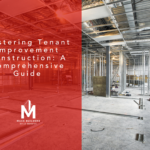Introduction
Efficient warehouse space utilization is crucial for businesses to maximize productivity and profitability. A well-designed warehouse layout not only improves operational efficiency but also enhances flexibility to adapt to changing business needs. In this blog, we will explore various design strategies that can optimize warehouse space, ensuring efficiency and flexibility.
1. Analyze and Optimize Workflow
Before diving into the physical aspects of warehouse design, it is essential to analyze and optimize the workflow. Understanding the movement of goods, order processing, and inventory management will help identify areas for improvement.
Consider implementing a warehouse management system (WMS) to streamline operations. A WMS can provide real-time data on inventory levels, order status, and optimize picking routes, reducing unnecessary movement and improving overall efficiency.
2. Utilize Vertical Space
One of the most effective ways to optimize warehouse space is by utilizing vertical space. Instead of focusing solely on floor space, consider the height of your warehouse. Installing taller racks and utilizing mezzanine levels can significantly increase storage capacity.
Invest in sturdy and adjustable pallet racking systems that allow for vertical stacking. This will help maximize storage density while ensuring easy access to goods. Additionally, consider using automated storage and retrieval systems (AS/RS) to efficiently utilize vertical space and improve picking accuracy.
3. Implement Efficient Slotting Techniques
Efficient slotting techniques involve organizing products based on their characteristics, demand, and picking frequency. By strategically placing fast-moving items closer to the shipping area, you can reduce travel time and increase order fulfillment speed.
Consider implementing an ABC analysis to categorize products based on their importance and demand. This will help determine the optimal location for each item within the warehouse, reducing unnecessary movement and improving overall efficiency.
4. Embrace Modular and Flexible Storage Solutions
Flexibility is key in warehouse design, as businesses often need to adapt to changing product lines and order volumes. Embrace modular storage solutions that can be easily reconfigured to accommodate different product sizes and quantities.
Invest in adjustable shelving units, mobile racking systems, and collapsible containers. These solutions allow for easy reorganization and expansion, ensuring efficient use of space while adapting to evolving business needs.
5. Optimize Aisles and Pathways
The layout of aisles and pathways within the warehouse can significantly impact efficiency. Optimize aisle width based on the type of equipment used for material handling. Narrower aisles can maximize storage capacity, but wider aisles may be necessary for larger equipment or high traffic areas.
Consider implementing a well-defined traffic flow plan to minimize congestion and ensure smooth movement of goods. Clearly mark pedestrian and forklift-only zones to enhance safety and prevent accidents.
6. Embrace Automation and Technology
Automation and technology play a vital role in optimizing warehouse space. Implementing barcode scanning, RFID systems, and automated conveyor belts can streamline order processing and reduce manual errors.
Consider integrating warehouse control systems (WCS) with your WMS to automate inventory management, order routing, and replenishment. This integration can improve overall efficiency and accuracy while reducing labor costs.
7. Prioritize Safety and Ergonomics
Creating a safe and ergonomic working environment is crucial for warehouse operations. Prioritize safety measures such as proper lighting, clear signage, and well-maintained equipment to prevent accidents and injuries.
Invest in ergonomic material handling equipment, such as lift-assist devices and adjustable workstations, to reduce strain on workers and improve productivity. Regularly train employees on proper lifting techniques and safety protocols to ensure a safe working environment.
Conclusion
Optimizing warehouse space through efficient design strategies is essential for businesses to achieve operational excellence. By analyzing workflow, utilizing vertical space, implementing efficient slotting techniques, embracing modular storage solutions, optimizing aisles, embracing automation, and prioritizing safety, businesses can enhance efficiency and flexibility while maximizing their warehouse space utilization.
Remember, a well-designed warehouse not only improves productivity but also contributes to customer satisfaction through faster order fulfillment and accurate inventory management.
Call to Action: Transform Your Warehouse Efficiency with Maxx Builders
Don’t settle for a warehouse that’s merely functional; aim for one that’s exceptional. Implementing the right design strategies can revolutionize your warehouse, improving operational efficiency and customer satisfaction. Maxx Builders specializes in commercial construction, bringing innovative solutions to warehouse design and space optimization.
Why navigate the complexities of warehouse design alone when you can leverage our decades of expertise? From analyzing workflow to implementing cutting-edge automation systems, Maxx Builders can make your vision a reality.
Take the first step toward a more efficient and profitable warehouse today. Contact Maxx Builders for a comprehensive consultation. Because when it comes to commercial construction, we build excellence.




